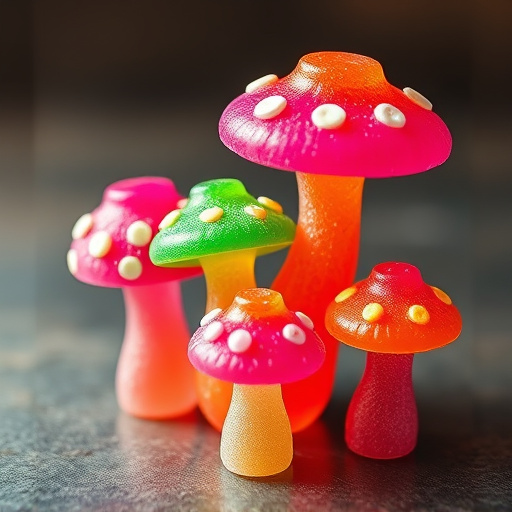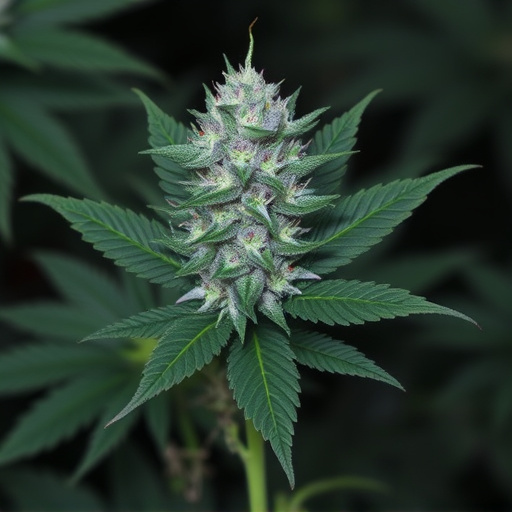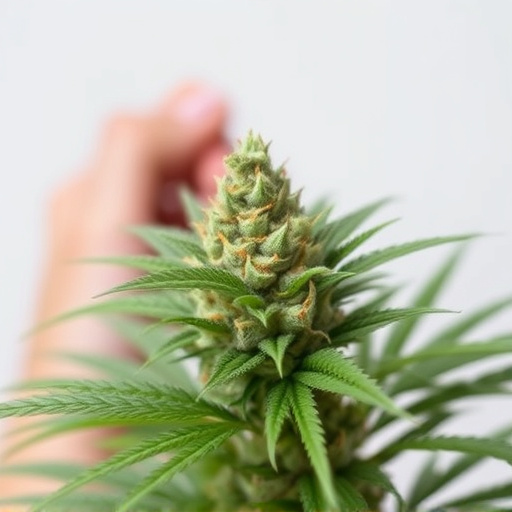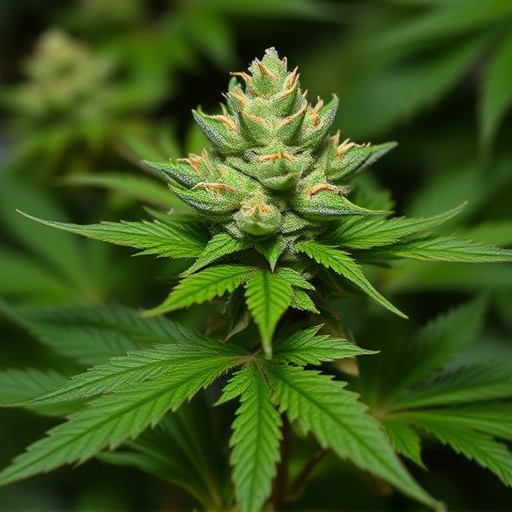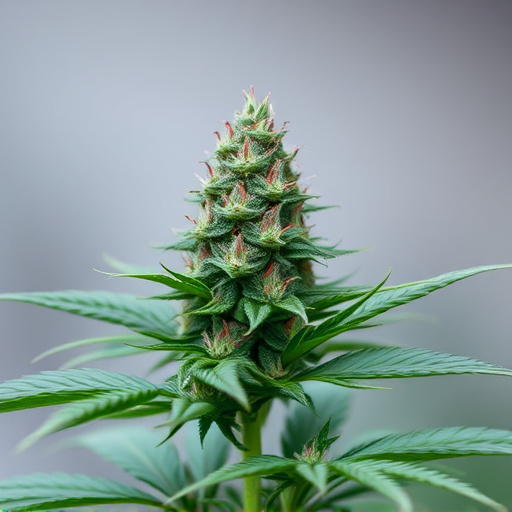Cannabis metabolism and elimination vary by consumption method, strain, and individual factors. THC's half-life ranges from 30 hours orally to shorter periods via smoking or vaping. High CBD, low THC strains like Charlotte's Web are effective migraine treatments with minimal detectability. Indica-dominant varieties like Granddaddy Purple offer pain relief but may prolong drug test positives. Understanding these nuances helps individuals choose the best cannabis strains for migraines while managing detection windows.
Discover how long cannabis flowers can stay detectable in your system. This comprehensive guide explores cannabis metabolism and elimination, highlighting factors that influence detection times. Learn about specific strains known for their effectiveness in treating migraines and understand their impact on testing windows. Gain insights to make informed decisions regarding cannabis use and its potential benefits.
- Understanding Cannabis Metabolism and Elimination
- Factors Affecting Cannabinoid Detection Time
- Best Cannabis Strains for Migraines and Their Impact on Detection Window
Understanding Cannabis Metabolism and Elimination
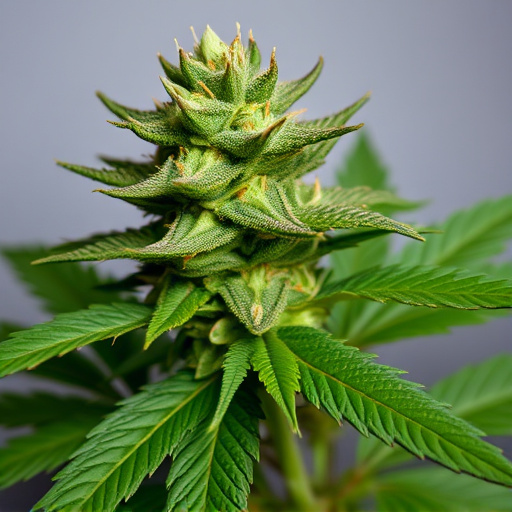
Cannabis, or marijuana, is metabolized and eliminated from the body in a complex process. When consumed, whether through smoking, vaping, or edibles, cannabis compounds enter the bloodstream through lung tissues or the digestive system. From there, they are transported to various organs, including the liver, where they undergo metabolism. The primary metabolite of THC (tetrahydrocannabinol), the compound responsible for cannabis’s psychoactive effects, is 11-hydroxy-THC (11-OH-THC). This metabolite is even more potent than THC, which prolongs its stay in the body.
The elimination half-life of cannabis varies depending on consumption method and individual factors like metabolism and body weight. On average, THC has a half-life of approximately 30 hours when ingested orally, making it detectable in drug tests for several days or even weeks after use. This is particularly relevant when considering the impact of regular consumption, such as using specific strains known for their therapeutic benefits, including those popular as best cannabis strains for migraines. Understanding metabolism and elimination rates can help individuals manage the duration cannabis remains in their system and make informed decisions regarding its use.
Factors Affecting Cannabinoid Detection Time

Several factors influence how long cannabis remains detectable in your system, including the type or strain consumed. Different cannabis varieties have varying cannabinoid profiles, with some best known for their potential migraine relief benefits, such as high CBD and low THC strains. These non-intoxicating compounds may be detected for longer periods compared to THC alone. The method of consumption also plays a role; edibles, for example, can take several hours or even days to metabolize fully due to their slow absorption into the bloodstream.
Additionally, individual factors like metabolism, body weight, frequency of use, and overall health significantly affect detection times. Regular users may have shorter retention periods as their bodies adapt to cannabinoids. Conversely, occasional consumers might test positive for longer, especially if they consume high-potency strains or larger doses.
Best Cannabis Strains for Migraines and Their Impact on Detection Window
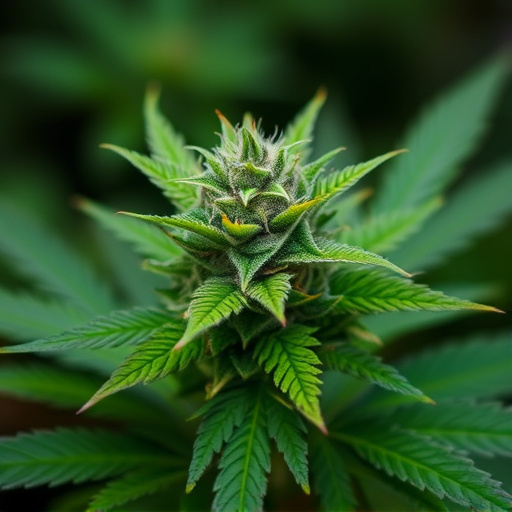
Cannabis has gained attention as a potential treatment for various conditions, including chronic pain and headaches like migraines. Among the many strains available, some have proven effective in alleviating migraine symptoms. For those seeking relief, understanding how different cannabis strains can impact detection windows is essential.
The best cannabis strains for migraines often fall into two categories: Indica-dominant and CBD-rich varieties. Indicas are known for their relaxing effects, which can help unwind tense muscles and promote better sleep—common triggers for migraines. Strains like Granddaddy Purple or Blue Dream are popular choices due to their high THC content, offering potent pain relief but potentially widening the detection window. On the other hand, CBD-rich strains, such as Charlotte’s Web, contain minimal THC and higher levels of cannabidiol, which has anti-inflammatory properties and may reduce migraine frequency without causing a positive test result. These strains provide an alternative for those concerned about drug testing while seeking natural migraine management.
Cannabis metabolism varies from person to person, with factors like strain, consumption method, and individual biology influencing its duration in the system. While studies suggest that THC can be detected in urine up to 30 days after use, actual elimination times are generally shorter for most individuals. For those seeking relief from migraines using cannabis, understanding the detection window is essential. Certain best cannabis strains for migraines, known for their high CBD content and low THC levels, may offer a longer period of symptom alleviation without extending detection time significantly. Regular consumption and metabolite buildup could potentially increase the chance of positive tests, so users should be mindful of their usage frequency.
